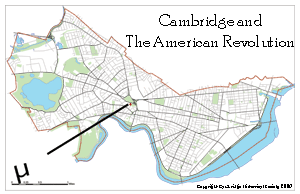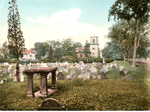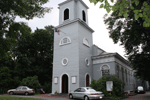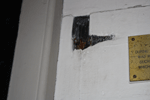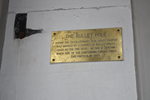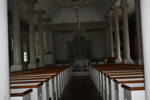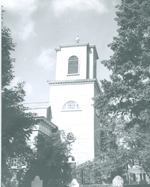Christ Church
Christ Church is the oldest standing church in Cambridge. Although today its design may look simple and understated, during the pre-Revolutionary era, the building was notorious for its garishness. Originally constructed in 1759 to resemble a typical English Anglican church, it drew mostly loyalist parishioners. However, when the wealthy band of Tories fled Cambridge in 1775, their church, just as their houses, was abandoned.
With the Tories gone, Christ Church quickly fell into a state of disrepair. The Town of Cambridge and its inhabitants had little money to spare, and what little they had was not to be squandered on restoring the loyalist church. This was true, until late in 1775 when preparations were to be made for a service requested by none other than Martha Washington herself. On New Year’s Eve of 1775, Christ Church temporarily reopened its doors. In an elite ceremony, General George Washington, Martha, and several other high ranking officials with their wives prayed together that King George III would come to his senses and, “…Open his eyes and enlighten his understanding, that he may pursue the true interest of the people over whom Thou in thy Providence hast placed him. Remove far from him all wicked, corrupt men, and evil counselors, that his throne may be established in justice and righteousness.” But, King George III never did come to his senses. After this service, the church’s pulpit was shutdown and, as virtually all other forsaken buildings, was converted into barracks for Continental soldiers. Part of its organ was melted down for bullets.
In October of 1777, the British General, John Burgoyne and his 5,700-man column were surrounded by Continental Forces near Saratoga, New York. As a condition of the settlement, this mix of British and hired Germanic Hessian troops were to be marched to Cambridge where they would be held as prisoners of war.
Their arrival presented a complicated situation. Cambridge citizens considered these soldiers the “enemy,” thus when asked to quarter them in their very own homes, they simply refused. The question of where to lodge them became a serious dilemma because Cantabridgians made no effort to hide their animosity towards the incoming British forces.
As tensions rose, violence erupted on the afternoon of June 17, 1778 and a British officer, Lt. Richard Browne, was shot in the head and killed by a colonial guard after disobeying his orders. Charges were brought against the perpetrator, however, he was acquitted by a jury of fifteen Cambridge men. At this point, General Burgoyne had been given permission to leave Cambridge and had left the British and Hessian troops under the command of William Phillips. Phillips requested that Lt. Richard Brown be given a proper funeral service and one was held in Christ Church. However, enraged Cambridge residents protested their displeasure by breaking into the church during the service, a British eyewitness reported, “…the Americans seized the opportunity of the church being open, which had been shut since the commencement of hostilities, to plunder, ransack, and deface every thing they could lay their hands on, destroying the pulpit, reading-desk, and communion-table, and ascending the organ loft, destroyed the bellows and broke all the pipes of a very handsome instrument.”
Christ Church Today
 |
Back to Interactive Map |
